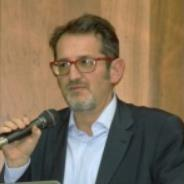Sharing and Discussion of Experiences and Approaches to Interpretation, Conservation and Management of Archaeological and Architectural Heritage
A special issue of Heritage (ISSN 2571-9408).
Deadline for manuscript submissions: closed (31 March 2019) | Viewed by 46433
Special Issue Editors
Interests: heritage science; remote sensing in archaeology; architectural conservation; archaeological science; humanities
Special Issues, Collections and Topics in MDPI journals
Interests: conservation of cultural heritage; non-destructive techniques for diagnostics on cultural heritage; microclimatic monitoring; preventive conservation
Special Issues, Collections and Topics in MDPI journals
Interests: archaeometry; stone decay; metal corrosion; pottery; air pollution; conservation science
Special Issues, Collections and Topics in MDPI journals
Special Issue Information
Dear Colleagues,
This Special Issue of Heritage encourages the submission of contributions presented at the 6th YOCOCU (Youth in Conservation and Cultural Heritage Conference "Dialogues in Cultural Heritage", held in Matera 22–26 May, 2018. The Conference was aimed at the interpretation, conservation and management of archaeological and architectural heritage, including risk assessment and monitoring. YOCOCU’s scientific community represents a forum where to exchange different methodological approaches and best practices for a sustainable preservation of Cultural Heritage all around the world.
The comparison and exchange of heritage science approaches and good practices for knowledge improvement, restoration and fruition of archaeological sites and of architectural heritage is a duty and an opportunity to foster a shared awareness of the importance to defend and manage our common heritage using an integrated approach, beyond national policies and cultural diversities, religions, conflicts.
Therefore, research articles addressing the following (not exhaustive) list of topics are welcomed:
- Archaeological science
- Archaeological heritage between conservation and management
- Archaeological research and cultural landscape
- Architectural restoration and conservation: approaches and case studies
- Architecture and construction techniques history
- Public archaeology
- Remote sensing for archaeology and cultural heritage management
- Cultural heritage risk assessment, monitoring and mitigation
- Remote and in-situ sensing technologies for the conservation and interpretation of monuments
Dr. Nicola Masini
Dr. Fernanda Prestileo
Prof. Nick Schiavon
Guest Editors
Manuscript Submission Information
Manuscripts should be submitted online at www.mdpi.com by registering and logging in to this website. Once you are registered, click here to go to the submission form. Manuscripts can be submitted until the deadline. All submissions that pass pre-check are peer-reviewed. Accepted papers will be published continuously in the journal (as soon as accepted) and will be listed together on the special issue website. Research articles, review articles as well as short communications are invited. For planned papers, a title and short abstract (about 100 words) can be sent to the Editorial Office for announcement on this website.
Submitted manuscripts should not have been published previously, nor be under consideration for publication elsewhere (except conference proceedings papers). All manuscripts are thoroughly refereed through a single-blind peer-review process. A guide for authors and other relevant information for submission of manuscripts is available on the Instructions for Authors page. Heritage is an international peer-reviewed open access monthly journal published by MDPI.
Please visit the Instructions for Authors page before submitting a manuscript. The Article Processing Charge (APC) for publication in this open access journal is 1600 CHF (Swiss Francs). Submitted papers should be well formatted and use good English. Authors may use MDPI's English editing service prior to publication or during author revisions.







